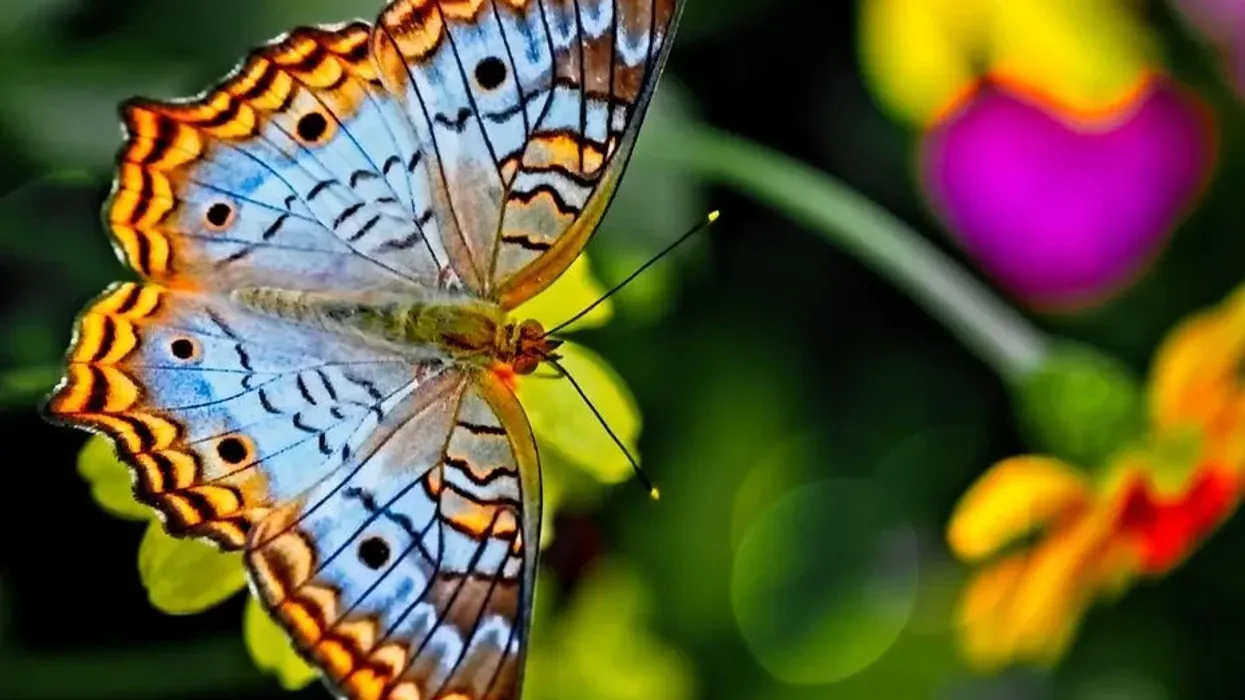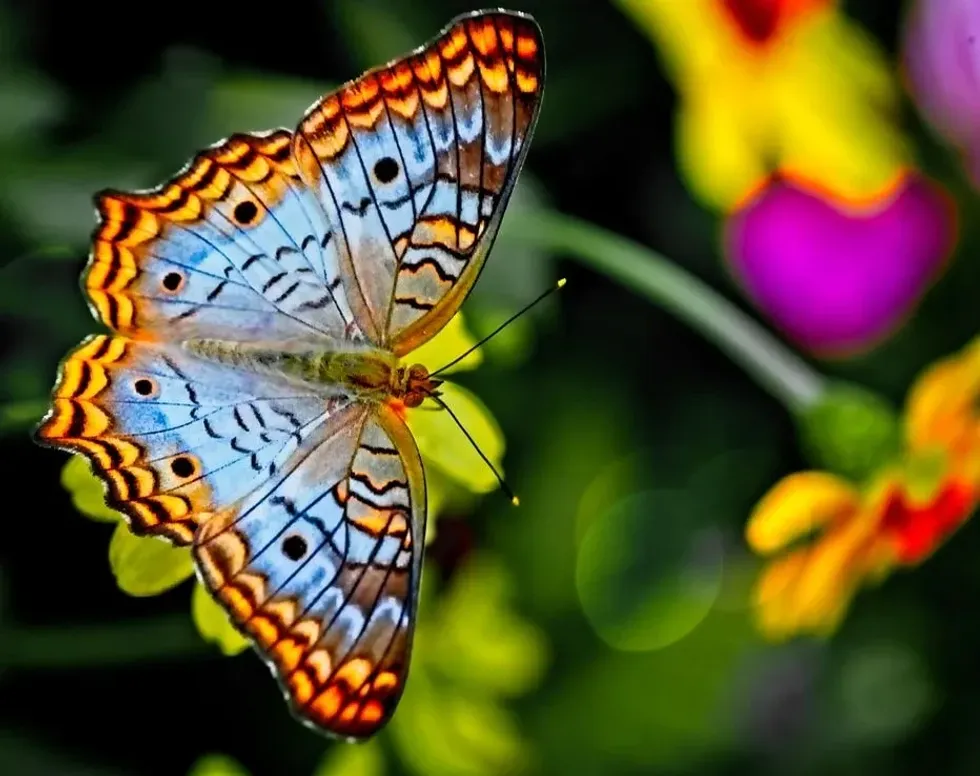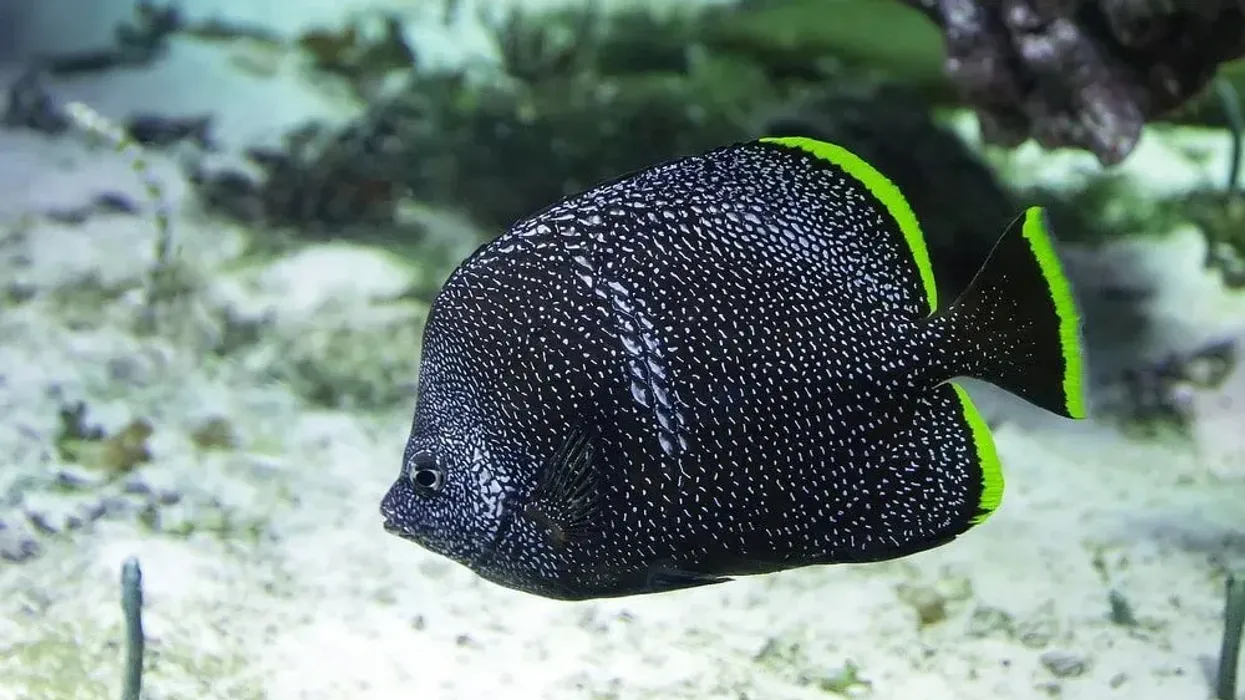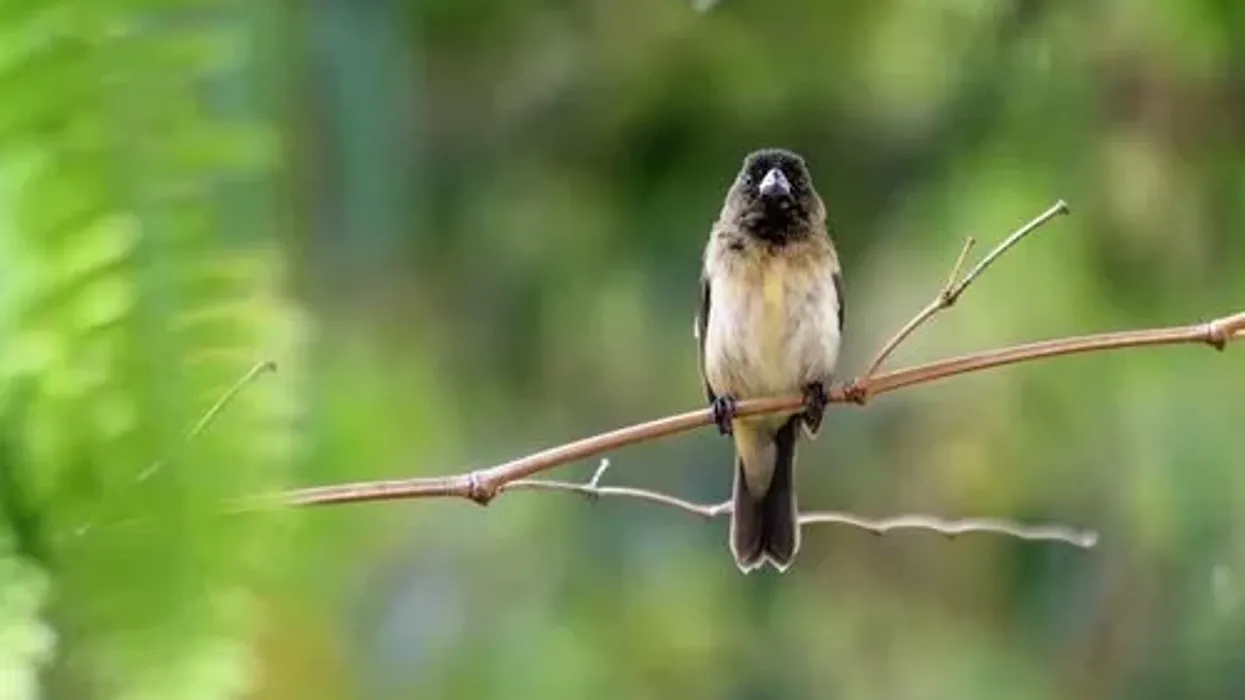Butterflies belong to the family Nymphalidae. Scientific studies suggest that butterflies first appeared in the age of flowering plants which was more than 135 million years ago.
This would roughly place them at the same point in time in the geological time scale as dinosaurs. They have a life cycle of four stages from larvae to their final form which is the butterfly form.
First, the adult butterfly lays eggs on a leaf. These eggs are called larvae. Caterpillars come out of the larvae and quickly turn into a chrysalis.
Then these chrysalides hang themselves under branches and leaves. Inside the chrysalis, they will be safe from predators. Since the butterfly has an extensive list of predators ranging from birds, lizards, and spiders to wasps, toads, and frogs, it is imperative that the butterfly protects itself at this crucial stage when its movement is limited.
The chrysalis is extremely important since it helps in the structural formation of the butterfly. The skin of the chrysalis falls off and an adult butterfly comes out of the chrysalis and flies away with its wings. The butterfly's body is thin and small and its color is black.
The body has two antennas that are attached to the top of the head. Four long legs and two small legs are also attached to its body part called the thorax. Their wings are full of colors, like orange, green, red, and pink.
Their wings have various types of patterns. Some wings are single-colored and some wings are multicolored.
Their wings are covered with very small scales. From these scales, the wings get their colors. These scales shine brightly when the sunlight reflects from them.
Butterflies feed on the nectar of the flowers and it is the main food source for adult butterflies. Caterpillars feed on the plant in which they are born, these plants are called host plants. They love to feed on a soft leaf of a plant.
If you like reading articles like this then you can check out the monarch butterfly and the morpho butterfly.
Butterfly Interesting Facts
What type of animal are butterflies?
Butterflies are insects and belong to the Nymphalidae family.
What class of animal do butterflies belong to?
Butterflies belong to the Insecta class.
How many butterflies are there in the world?
Butterflies have nearly 20,000 species in the world but the number of all butterflies in the world is unaccounted for. Thus there is no verified data stating the exact number of butterflies.
Where do butterflies live?
Far from being rare, butterflies are actually pretty common. They can be found from mountains to plains to tropical rainforest to deserts. They can be found in grasslands and tundras also.
What is a butterfly's habitat?
Butterflies can be found on almost every continent except Antarctica. This is due to Antarctica's hostile environment consisting of extremely low temperature and harsh weather that these lovely animals cannot thrive in. Usually, they don't have any nest. So they sleep under the leaves of the trees, bushes, rocks, grass.
Who do butterflies live with?
Usually, they spend time in groups. These groups are called bivouacs. Monarch butterflies, however, travel alone.
How long do butterflies live?
Butterflies can live up to 14 days, but monarch butterflies can live seven to nine months, some of them even live for as long as 11 months.
How do they reproduce?
Butterflies reproduce sexually like other animals. When mating begins both the female and male butterflies release their pheromones, then the male butterfly is accepted by his female counterpart. Upon the acceptance of the invitation, the male butterfly injects his reproductive fluids into the female's stomach where she keeps it until she is ready to lay eggs.
What is their conservation status?
As per the IUCN Red List, the butterfly's conservation status is listed as of Least Concern. However, Queen Alexandra's birdwing butterflies are listed as being Endangered.
Butterfly Fun Facts
What do butterflies look like?

Butterflies are beautiful creatures. They have two antennae on their head, compound eyes, a thorax, an abdomen, four wings, and six legs. Some species of butterflies have very small and clawless front feet like the brush-footed butterfly.
Butterflies have colorful wings of red, blue, green, or yellow. Their wings are covered with many tiny scales. These scales have pigment on them which is why the wings have many colors and various patterns.
How cute are they?
Considered over time to be a symbol of beauty, it is, without doubt, among the prettiest creatures found in nature. Its poised, almost nuanced, presence has been the subject of many a song and poem and generally, people do find butterflies to be extremely cute.
How do they communicate?
Butterflies communicate by signals which are created by a chemical reaction. Some species of butterflies can make sounds with their wings to communicate with others.
How big are butterflies?
The average length and weight of a butterfly are 0.13-12 in (0.31-30.48 cm) and 0.017-0.019 oz (0.50-0.55 g) respectively, proving to be five times bigger than mosquitoes, with an exception of the Queen Alexandra's birdwing butterfly, which is 10 times bigger than the more common species of butterflies.
This species is the largest among all of them and can be found in Papua New Guinea
How fast can butterflies fly?
Butterflies are really fast. They catch speeds of up to 30 mph (48.2 kph).
How much do they weigh?
Common butterflies weigh about 0.017-0.019 oz (0.50-0.55 g). This however is different for the largest butterfly found in nature, the Queen Alexandra's birdwing butterfly, which weighs about 0.42-0.49 oz (12-14 g)
What are their male and female names of the species?
There is no special name for male butterflies or female butterflies.
What would you call a baby butterfly?
A baby butterfly is called a larva.
What do they eat?
Butterflies are herbivorous. Adult butterflies use their straw-like tongue to drink the nectar from flowers. Some species almost never go near flowers, instead, they collect their food from rotting animals or tree sap. On the other hand, caterpillars eat the green leaves of the plants in which their eggs hatched.
Are they dangerous?
Some butterflies are poisonous but their poison is not lethal enough to kill a human or a large animal. Generally speaking, butterflies are harmless creatures who tend to mind their own business and rarely get into conflict with any other species.
Would they make a good pet?
Caterpillars can be a good pet if you can provide them with the sustenance that they require. But adult butterflies are a bit more sophisticated.
The life span of butterflies can range from a day to a whole year, and it would depend on which species one decides to keep as a pet. It is important to remember in this regard that butterflies cannot be trained like dogs and cats to follow instructions.
Did you know...
Common butterflies can live up to 14 days, but monarch butterflies can live up to seven to nine months.
Monarch butterflies can travel longer.
Mourning Cloak butterflies can live up to 11 months. They can be found in North America.
Butterfly's eyes are compound eyes. Instead of one big lens, they have about 17,000 small lenses in their eyes. They can see the ultraviolet ray through their compound eyes.
Butterflies don't sleep with their eyes closed. They keep their eyes open while resting.
Butterfly's wings are transparent which means they are see-through.
When the air temperature drops, it's hard for the butterfly to fly and they cannot fly in winter.
Butterflies use their feet to get the taste of foods.
When they fly, they create a fluttering pattern. This makes it harder for the predators to track their movements.
It seems that brush-footed butterflies have four legs instead of six. Actually, their front two feet are so small and clawless that the front feet are not visible.
History tells us that at some points they were called buttorfleoge.
According to scientific journals, monarchs have an average flight range of 50-100 mi (80.46-161 km). Some monarchs even have a flight range of 200 mi (321.86 km). Monarch's larva or caterpillars feed only on milkweed leaves.
Every year monarchs travel from North America to central Mexico, up to 3000 mi (4828 km). Monarch butterflies are poisonous but not to humans, they use this poison to defend themselves from predators like frogs, spiders, and grasshoppers. These are some monarch butterfly facts.
Different types of butterfly
According to scientific journals and surveys, there are nearly 20,000 species of butterflies living in the world and they can be found on every continent except Antarctica. In North America, there are approximately 700 species of butterflies flying around.
These same species of butterflies can be found in Mexico too. Some species of butterflies include the red admiral (Vanessa atalanta), the monarch (Danaus plexippus), and the Karner blue (Plebejus melissa samuelis).
What do butterflies symbolize?
In different cultures, humans use butterflies as a symbol for different concepts of life. Butterflies symbolize resurrection to one culture. On the other hand, they also symbolize hope, change, and courage. In Mexico, butterflies represent the souls of the dead and are a symbol of remembrance.
Here at Kidadl, we have carefully created lots of interesting family-friendly animal facts for everyone to discover! Learn more about some other arthropods including the caterpillar and the purple emperor butterfly.
You can even occupy yourself at home by drawing one of our butterfly coloring pages.










